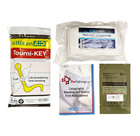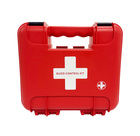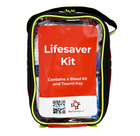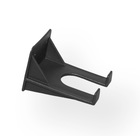Adult CPR
Want to watch this video? Sign up for the course
or enter your email below to watch one free video.
Unlock This Video Now for FREE
This video is normally available to paying customers.
You may unlock this video for FREE. Enter your email address for instant access AND to receive ongoing updates and special discounts related to this topic.
Adult CPR Procedure: Step-by-Step Guide
Introduction to CPR
CPR, or cardiopulmonary resuscitation, is essential for unconscious individuals not breathing.
Assessing the Situation
- Approach and Introduce Yourself: Stop, introduce yourself as a first aider, and check for responsiveness.
- Breathing Check: Tilt the head back, lift the chin, and check for normal breathing sounds or signs of agonal breathing (gasping).
Calling Emergency Services
If alone, call Emergency Services immediately (dial 999 in the UK) before starting CPR.
Performing Chest Compressions
- Positioning: Interlock fingers and place hands on the centre of the chest.
- Compression Technique: Push down 5-6 centimeters at a rate of 100-120 compressions per minute.
- Depth and Speed: Ensure full release between compressions to allow blood to flow back into the heart.
Administering Rescue Breaths
- Opening Airway: Tilt head back, lift chin, and pinch nose shut.
- Delivering Breaths: Provide two quick breaths, ensuring chest rises.
Continuing CPR Cycle
- After breaths, resume compressions immediately with minimal interruption (less than 10 seconds).
- Continue cycles of 30 compressions and 2 breaths until help arrives or the patient shows signs of recovery.
Using an AED (Automatic External Defibrillator)
If available, use an AED as soon as possible. Follow its prompts and continue CPR until advised otherwise.
Assessing Signs of Recovery
If the patient shows signs of recovery (normal breathing or waking up), place them in the recovery position and monitor.
Stopping CPR
If signs of recovery occur during CPR, assess the situation carefully before stopping compressions to ensure sustained improvement.
Recommended Products For You
First Aid Upgrade Kit
£14.00 + VAT
Lifesaver Kit with Tourni-Key - Green
£85.00 + VAT
Lifesaver Kit with Tourniquet - Green
£99.00 + VAT
Lifesaver Kit with Tourni-Key - Black
£85.00 + VAT
Bleed Control Kit In Red Titan Box
£55.00 + VAT
Lifesaver Kit with Tourni-Key - Red
£85.00 + VAT
Lifesaver Kit with Tourniquet - Black
£99.00 + VAT
First Aid Box Wall Bracket (Single)
£0.35 + VAT







